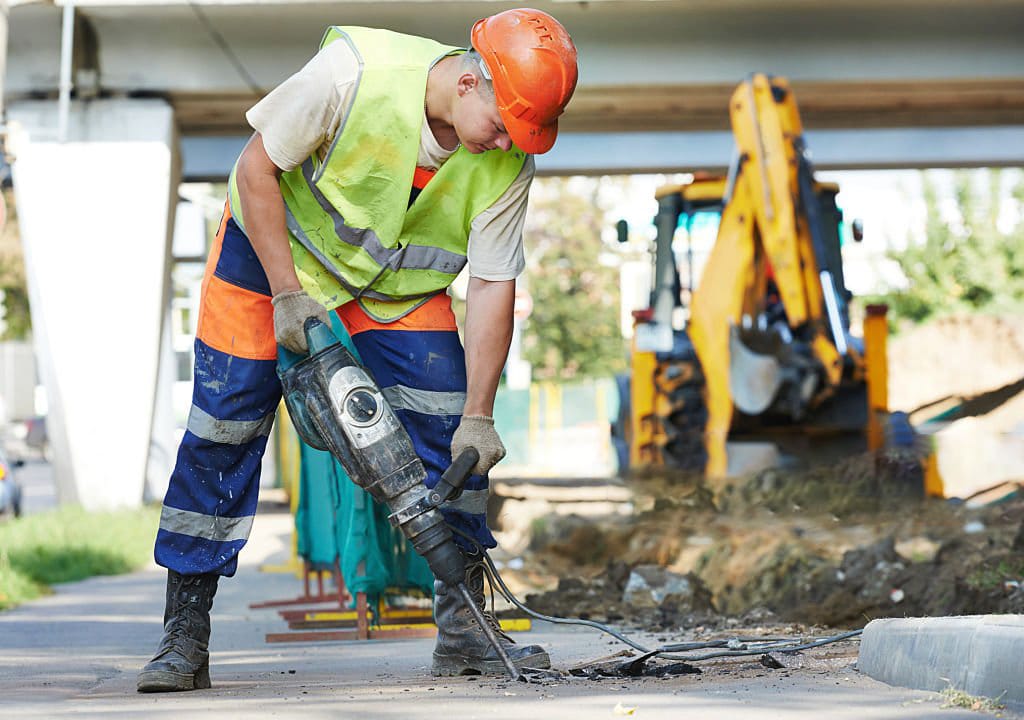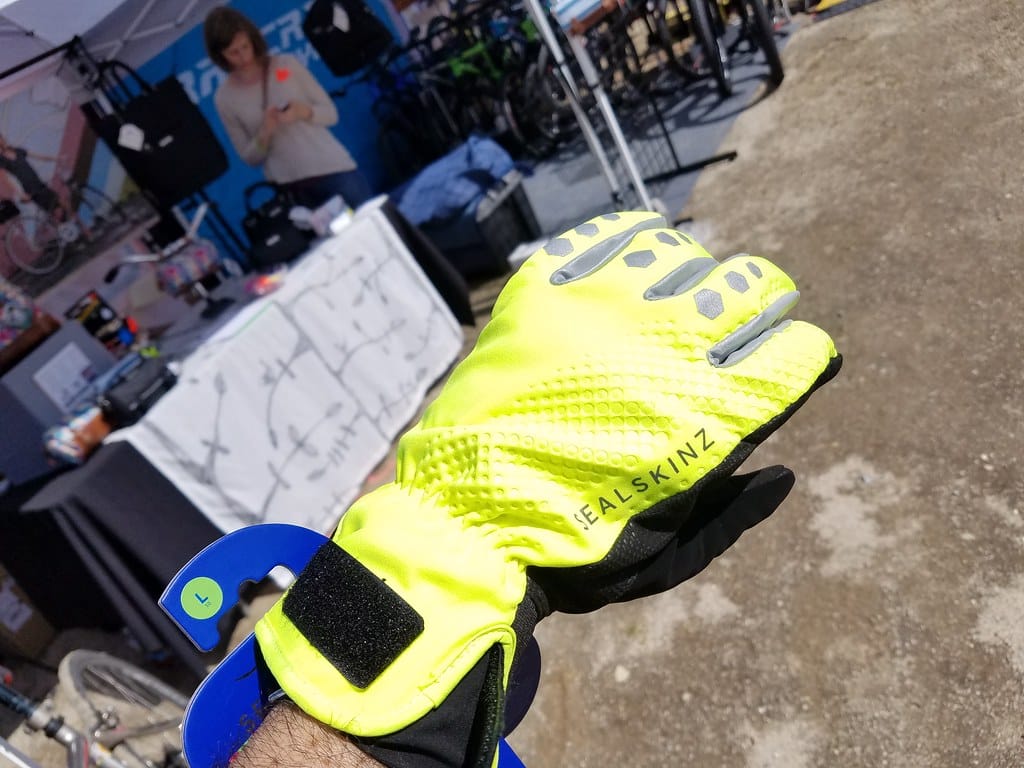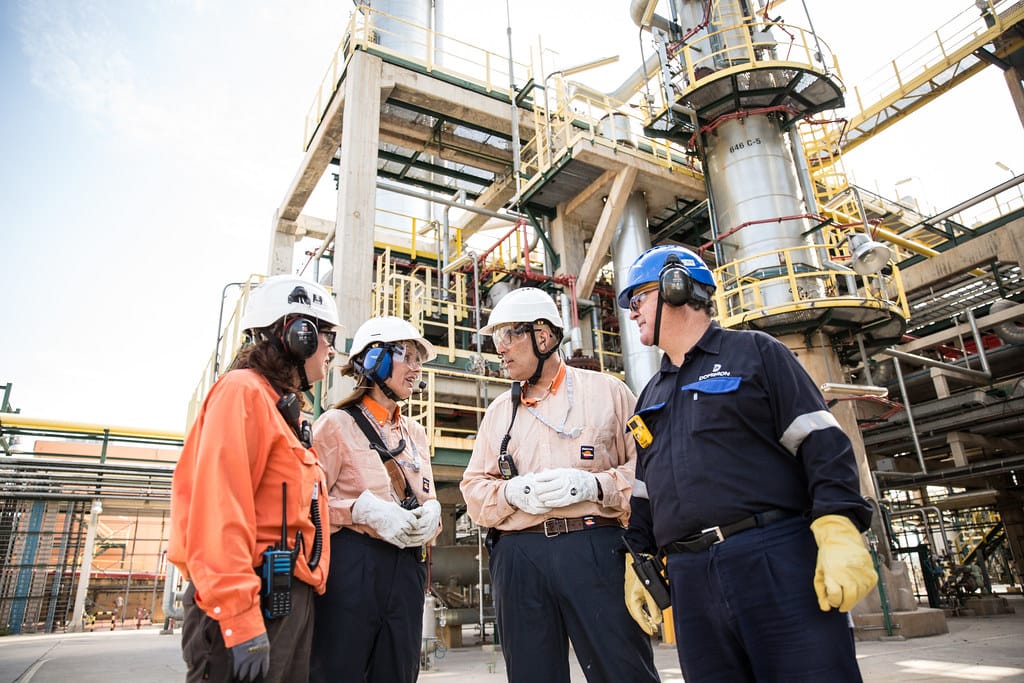
Smart Personal Protective Equipment (PPE) is redefining workplace safety. Among the most impactful innovations are smart helmets and connected safety vests — wearable devices equipped with IoT sensors, AI analytics, and real-time communication. These tools are transforming safety management from reactive to predictive, helping industries across construction, manufacturing, logistics, and energy reduce accidents, injuries, and downtime.
Google Snippet: Quick Answer
Smart helmets and vests integrate IoT sensors to detect falls, proximity hazards, temperature changes, and worker fatigue — automatically alerting supervisors in real time.
Essential functions include impact detection, GPS tracking, heat stress monitoring, and two-way alerts. Compliance with PPE standards (EN 397, EN ISO 20471) plus IoT-related data protection frameworks ensures both physical and digital safety.
1. Why On-Site Environments Require Smart PPE
1.1 The Persistent Risk Problem
Despite decades of traditional PPE use, worksites continue to face:
- Falls from height — the top cause of fatal construction injuries.
- Struck-by accidents from moving vehicles or machinery.
- Heat stress and fatigue in high-temperature conditions.
- Lone worker isolation in remote or noisy zones.
Traditional PPE protects after an incident occurs. Smart PPE prevents incidents before they happen.
1.2 How IoT Changes the Game
Smart helmets and vests use IoT connectivity to:
- Monitor worker movement, heart rate, and posture.
- Detect falls, impacts, and inactivity.
- Sense temperature, humidity, and toxic gases.
- Alert via vibration, sound, or visual signals.
- Stream data to cloud dashboards for predictive analysis.
📡 In short: IoT gives PPE “eyes and ears.” It doesn’t just protect—it communicates.
1.3 Example: From Passive to Predictive Safety
| Type | Traditional PPE | Smart PPE |
|---|---|---|
| Helmet | Absorbs physical impact | Detects fall or collision and sends GPS alert |
| Vest | High-visibility only | Tracks location, detects heat stress, sends SOS |
| Safety Program | Manual inspection | Automated risk alerts and data analytics |
2. The Core Technology Inside Smart PPE
2.1 Embedded Sensors
- Accelerometers & gyroscopes — detect movement, impact, and falls.
- Optical heart sensors — track heart rate and stress.
- Temperature sensors — monitor environmental and body heat.
- Gas sensors (CO₂, CH₄, VOCs) — detect air-quality hazards.
- Proximity sensors — prevent collisions with heavy machinery.
2.2 Communication Modules
- Bluetooth Low Energy (BLE) — connects with smartphones or gateways.
- LoRa/NB-IoT — long-range, low-power communication for remote sites.
- Wi-Fi / LTE — real-time cloud connectivity for dashboards.
2.3 Data & Analytics Platforms
Collected data feeds into AI platforms to:
- Identify high-risk zones and recurring patterns.
- Predict worker fatigue or unsafe behavior.
- Optimize emergency response and training.
- Generate compliance reports for audits.
3. Why Smart Helmets and Vests Matter
3.1 Reduction in Accident Response Time
When a fall or collision occurs, sensors trigger automatic alerts within 2–3 seconds, including GPS location and worker ID — enabling immediate rescue.
3.2 Worker Health Monitoring
Wearables detect early signs of heat stress, heart irregularities, or fatigue, prompting breaks or rotation before accidents happen.
3.3 Improved Safety Compliance
Supervisors can monitor if PPE is being worn properly and consistently, reducing human error during audits.
3.4 Real-Time Zone Management
IoT zones can be digitally fenced. If a worker enters a restricted area, both the worker and supervisor receive instant alerts.
3.5 Data-Driven Safety Culture
Instead of relying on reactive reports, safety teams can analyze trends across shifts, weather conditions, and site zones to prevent repeat incidents.
4. Key Standards and Compliance Requirements
| Category | Relevant Standard | Focus |
|---|---|---|
| Helmet | EN 397 / ANSI Z89.1 | Shock absorption and penetration resistance |
| Vest | EN ISO 20471 | High visibility under all lighting conditions |
| Smart Electronics | IEC 61010 / IEC 62368 | Electrical safety for wearable electronics |
| Data Privacy | GDPR / ISO 27001 | Secure handling of biometric and location data |
| Connectivity | LoRaWAN / BLE 5.0 | Interoperable and reliable IoT communication |
| Battery Safety | UN 38.3 | Safe lithium battery transport and usage |
⚙️ Rule of thumb: Smart PPE must first meet traditional PPE standards, then pass IoT, battery, and data compliance layers.
5. Material Design and Durability Considerations
| Component | Material | Advantages | Limitations |
|---|---|---|---|
| Helmet Shell | ABS / Polycarbonate | Impact-resistant, lightweight | May deform under high UV exposure |
| Vest Fabric | PU-coated Polyester | Waterproof, easy to clean, supports embedded wiring | Limited breathability |
| Sensor Housing | Aluminum or reinforced plastic | Shockproof and heat-tolerant | Slightly heavier |
| Battery Pack | Lithium-polymer (encased) | Long runtime, compact | Requires regular maintenance |
| Straps & Fittings | Elastic nylon / silicone | Flexible and comfortable | Can retain sweat without liners |
6. Case Study Comparisons by Industry Segment
| Industry Segment | Unique Risks | Smart PPE Focus | Measured Outcome |
|---|---|---|---|
| Construction | Falls from height, heavy machinery | Helmets with fall sensors and GPS tracking | 45% faster rescue response times |
| Mining | Gas exposure, poor visibility | Vests with gas + light sensors | 60% fewer gas-exposure incidents |
| Oil & Gas | Fire risk, remote zones | Flame-retardant smart vests with LTE modules | 30% reduction in lone-worker incidents |
| Manufacturing | Fatigue, repetitive tasks | Heart-rate and posture monitoring vests | 25% fewer strain injuries |
| Logistics | Vehicle collision, warehouse traffic | Proximity alert systems on vests | 50% drop in forklift-related near misses |
7. Common Procurement Mistakes
| Mistake | Impact | Prevention Tip |
|---|---|---|
| Treating Smart PPE as Gadgets | Leads to short-lived adoption and maintenance failure | Evaluate sensor reliability, durability, and IoT certification |
| Ignoring Data Privacy | Risk of worker pushback or legal issues | Implement GDPR/ISO 27001-compliant systems |
| Overlooking Battery Life | Devices die mid-shift, losing protection | Require 12+ hours runtime and replaceable packs |
| Skipping Field Trials | Misfit for workflow and comfort | Conduct 30-day pilot tests in real environments |
| Lack of After-Sales Support | Downtime during firmware or hardware issues | Choose suppliers offering API integration and service contracts |
8. ROI Analysis: Smart vs Conventional PPE
| Scenario | Traditional PPE Annual Cost | Losses from Incidents | Smart PPE Annual Cost | Net Savings |
|---|---|---|---|---|
| Falls and delayed rescue | \$1,000 | \$60,000 | \$3,500 | \$57,500 |
| Heat stress and fatigue | \$800 | \$18,000 | \$2,200 | \$16,600 |
| Zone intrusion accidents | \$1,200 | \$45,000 | \$3,000 | \$43,200 |
| Insurance & downtime | \$2,000 | \$25,000 | \$4,000 | \$23,000 |
Conclusion: Even with higher upfront costs, smart PPE pays for itself through incident reduction, insurance savings, and productivity gains.
9. Buyer Checklist for Smart PPE Procurement
- [ ] Helmet: EN 397 certified, impact + fall detection sensors
- [ ] Vest: EN ISO 20471 certified, GPS + temperature + heart sensors
- [ ] Connectivity: BLE/LoRa/NB-IoT compatibility
- [ ] Battery: ≥ 12 hrs runtime, replaceable or quick-charge module
- [ ] Data Security: AES-256 encryption, GDPR/ISO 27001 compliance
- [ ] Dashboard Integration: Real-time monitoring + analytics API
- [ ] Durability: IP67 water/dust resistance, tested for shock/vibration
- [ ] Comfort: Ergonomic weight balance, breathable fabric
- [ ] Spare Stock: Maintain 10–15% backup for replacements
- [ ] Training: Workers trained to interpret alerts and care for devices
10. Frequently Asked Questions (FAQ)
Q1: Do smart helmets replace traditional PPE certifications?
A: No. Smart helmets must first meet physical protection standards (e.g., EN 397) before IoT features are added.
Q2: How are privacy concerns addressed?
A: By anonymizing location and biometric data, storing only aggregated safety analytics, and complying with GDPR/ISO 27001.
Q3: How long do smart PPE devices last?
A: Typically 2–3 years for hardware; sensors may need recalibration every 12 months.
Q4: What environments benefit most?
A: Construction, mining, oil & gas, utilities, and any site with remote workers or harsh conditions.
Q5: Can smart PPE integrate with existing safety systems?
A: Yes. APIs can connect with EHS software, HR systems, or maintenance dashboards.
11. Advanced Sourcing Strategies
-
Segment by Risk Zones:
Define PPE requirements for high-risk vs. low-risk zones; smart devices are ideal where hazards are dynamic or mobile. -
Vendor Validation:
Request sensor calibration certificates, IP ratings, and test reports (IEC/EN standards). -
Pilot Projects:
Implement small-scale trials before full deployment; collect user feedback and performance data. -
Lifecycle Planning:
Treat smart PPE as a managed asset — include updates, calibration, and end-of-life recycling in contracts. -
Integration with Analytics:
Combine PPE data with maintenance, training, and safety KPIs to build predictive safety dashboards. -
Partnership with Tech Providers:
Co-develop firmware updates and localized data centers to ensure performance and compliance.
12. The Human Factor: Worker Acceptance and Usability
12.1 Comfort and Ergonomics
Smart PPE must remain comfortable. Excess weight or poor ventilation can cause rejection by workers. Strive for:
- ≤ 1.5 kg total helmet weight
- Breathable mesh vests
- Adjustable straps and padding
12.2 Training and Behavior
Without proper onboarding, even advanced PPE can be ignored. Introduce:
- 10-minute pre-shift checks
- QR-based video tutorials
- Reward systems for PPE compliance
12.3 Privacy and Trust
Transparent communication about data collection (only safety-related) builds user confidence and cooperation.
13. Integration with Smart Site Ecosystems
Smart PPE should not operate in isolation. It integrates with:
- IoT Gateways: On-site receivers linking multiple devices.
- Smart Cameras: For visual confirmation of alerts.
- Digital Twins: 3D models of worksites showing live worker positions.
- AI Predictive Systems: Forecasting heat stress or fatigue risks hours ahead.
🧠 The goal is a “connected safety ecosystem,” where every worker, sensor, and machine communicates to prevent harm.
14. Challenges and Limitations
| Challenge | Description | Mitigation |
|---|---|---|
| Battery degradation | Frequent recharging reduces efficiency | Use modular batteries and wireless charging stations |
| Sensor accuracy drift | Calibration shifts over time | Schedule quarterly calibration cycles |
| Connectivity blind spots | Signal loss in underground or steel environments | Deploy LoRa gateways or mesh networks |
| Data overload | Too many alerts overwhelm supervisors | Implement AI filters and priority-based alerts |
| Cost perception | Higher initial investment | Show ROI via reduced incident and insurance costs |
15. Future Trends in Smart PPE
-
AI-driven Risk Prediction:
Algorithms will detect unsafe patterns before they cause injury. -
Edge Computing in Helmets:
Local data processing for faster, offline safety responses. -
Biometric Fatigue Monitoring:
Combining pulse, blink, and motion data to prevent micro-sleep incidents. -
Integration with Exoskeletons:
Smart PPE will link with wearable assistive devices for heavy lifting. -
Blockchain-based Safety Records:
Immutable data for compliance audits and worker history tracking.
16. Example ROI Calculation for a Construction Firm
Scenario:
A 200-worker construction site experiences 12 minor accidents and 2 major incidents per year.
| Metric | Before Smart PPE | After Smart PPE (Year 1) | Improvement |
|---|---|---|---|
| Minor accidents | 12 | 4 | −66% |
| Major incidents | 2 | 0 | −100% |
| Average downtime per event | 3 days | 0.5 day | −83% |
| Insurance premium | \$200,000 | \$150,000 | −25% |
| Annual savings | — | ≈ \$100,000 | — |
Payback period: ≈ 1 year
ROI over 3 years: > 300%
17. Implementation Roadmap for Buyers
-
Assessment Phase:
Evaluate hazard zones, tasks, and workforce distribution. -
Supplier Shortlisting:
Focus on vendors offering EN-certified + IoT-certified products. -
Pilot Deployment:
Run controlled trials (20–50 workers) and collect performance metrics. -
Training & Adoption:
Launch awareness workshops emphasizing safety and privacy. -
Data Integration:
Connect PPE dashboards with company EHS or ERP systems. -
Continuous Optimization:
Review data monthly, adjust parameters, and update firmware.
18. Conclusion
Smart helmets and vests mark a major shift in occupational safety — merging protective engineering with data intelligence.
By embedding IoT sensors into PPE, companies gain real-time visibility into worker safety, equipment zones, and environmental hazards.
Organizations that adopt smart PPE early gain:
- Fewer accidents and compensation claims
- Better regulatory compliance
- Stronger ESG performance metrics
- Enhanced brand reputation
📩 Need help sourcing certified smart PPE solutions for industrial and construction sites?
Email: [email protected]
🌐 www.workwearsolutions.net
Safety doesn’t stop at protection—it starts with prediction.
Zion Zhang
Recent Posts
 The Peruvian Entrepreneur Who Turned PPE Into a Family Business2025年10月31日Starting Point: A Small Shop Run by a Couple In the […]
The Peruvian Entrepreneur Who Turned PPE Into a Family Business2025年10月31日Starting Point: A Small Shop Run by a Couple In the […] How a Kazakhstani Trader Won a Government Contract for Mining Workwear2025年10月30日In Kazakhstan’s booming mining industry, one small trader […]
How a Kazakhstani Trader Won a Government Contract for Mining Workwear2025年10月30日In Kazakhstan’s booming mining industry, one small trader […] A South African Retailer’s Journey from Importing Shoes to Supplying Full PPE Kits2025年10月30日In South Africa’s rapidly growing industrial supply market, […]
A South African Retailer’s Journey from Importing Shoes to Supplying Full PPE Kits2025年10月30日In South Africa’s rapidly growing industrial supply market, […] How a Jordanian Contractor Built His Own Workwear Brand for Construction Projects2025年10月30日Introduction In the competitive world of construction, […]
How a Jordanian Contractor Built His Own Workwear Brand for Construction Projects2025年10月30日Introduction In the competitive world of construction, […] The Nigerian Agent Who Lost $50,000 on Fake Certificates — Then Came Back Stronger2025年10月20日Introduction In the global trade of PPE and industrial […]
The Nigerian Agent Who Lost $50,000 on Fake Certificates — Then Came Back Stronger2025年10月20日Introduction In the global trade of PPE and industrial […] How a Brazilian Trader Used $5,000 to Break into the PPE Market2025年10月20日Introduction In a world where industrial safety and […]
How a Brazilian Trader Used $5,000 to Break into the PPE Market2025年10月20日Introduction In a world where industrial safety and […]
CONTACT US
- Feel free to contact us any time. We will get back to you as soon as we can!
- +86-17303331701
